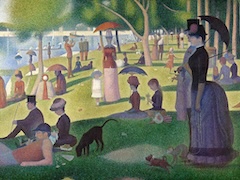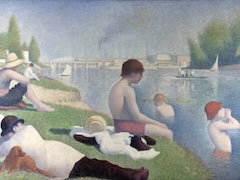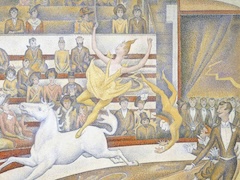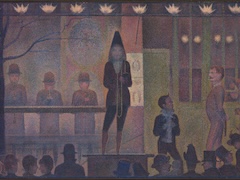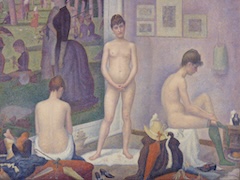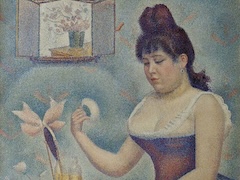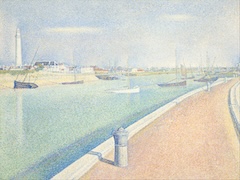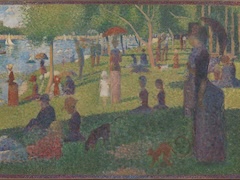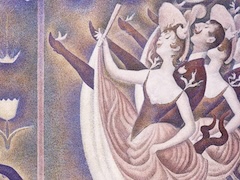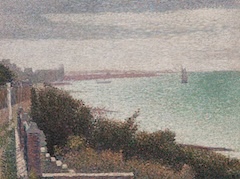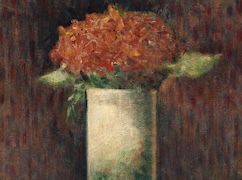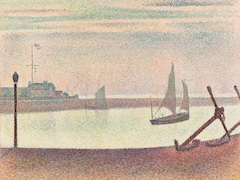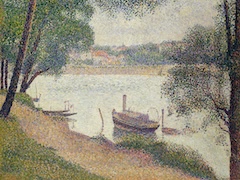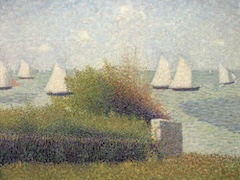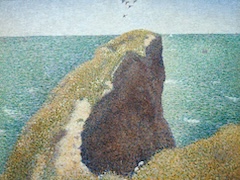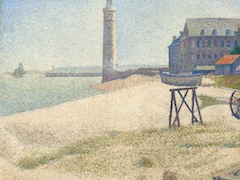A Field of Alfalfa, Saint Denis by Georges Seurat
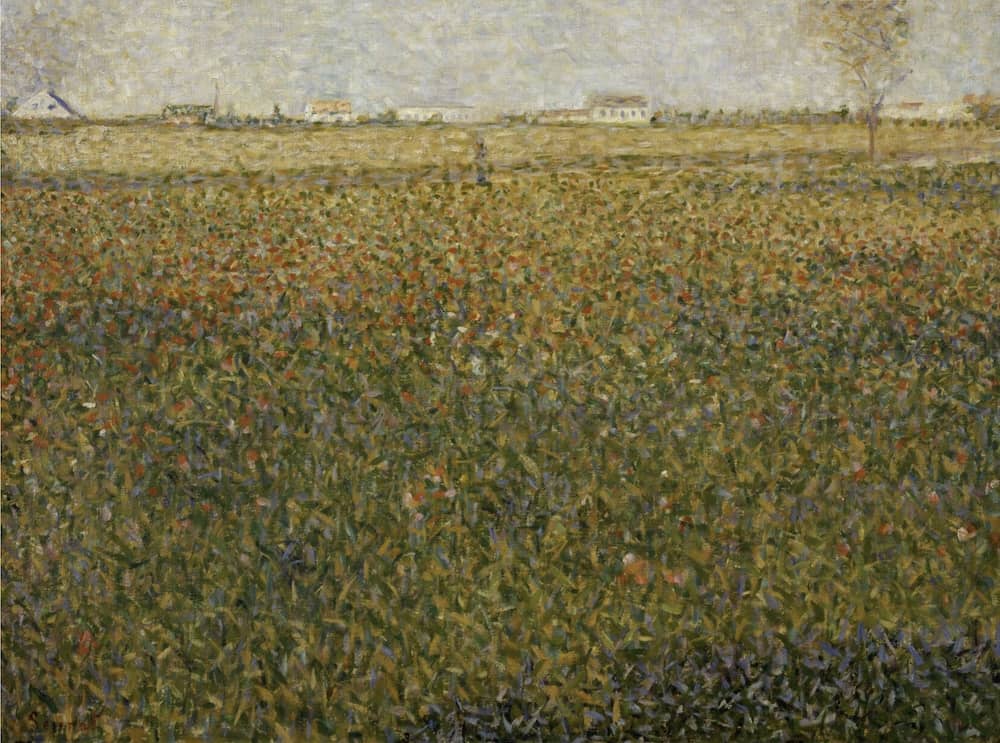
In Seurat's day, there was still a broad plain that separated Saint-Denis from Paris, and farming had not yet given way entirely to housing and industry. By painting these fields, Seurat avoided the city's factories, as had Claude Monet and Camille Pissarro before him. With a kind of innocent directness, he characterizes the region in this rudimentary composition. Across the field of alfalfa, reddened by invasive poppies, we find a low wall, then a hayfield, and finally a string of structures that are probably both farm buildings and residences. Daubigny, Monet, and Renoir had painted fields full of poppies, but they had provided more pictorial incidents than Seurat does here. Because of its high horizon line and its uninterrupted plain, the canvas has the flatness and "allover" texture that would appeal to artists after 1945.
When one views this picture firsthand, the broad plain seems to tip back in an illusion of receding space. This effect results partly from the brushstrokes, but just why it succeeds is not clear, for the strokes are very evidently the marks of the artist. Apparently we allow our perception to shift from a recognition of brushwork in the foreground, where the marks are very large, to an acceptance of illusion in the middle distance, where they have become progressively smaller. The sky has an even more recessive, tamponné stroke. Color also helps create the illusion of depth. In the lower right is the shadow of an overhead tree in resonant greens mixed with tans and accompanied by blues and lavender pinks (all these over orange-tan strokes). The basic color of the field is an unblended mixture of greens and orange tans, along with blues, lavenders, and some purple, but farther back the poppy reds are more numerous and the blues virtually disappear. In the distance, all the intensity is gone and our eyes can sink into the sky.

